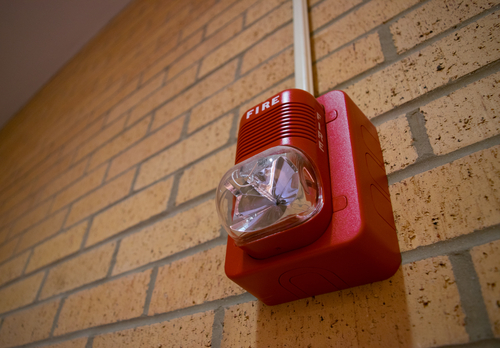As the new school year approaches, college students nationwide are preparing to move into campus dormitories and off-campus housing. Through their annual “Campus Fire Safety for Students” campaign in September, the National Fire Protection Association (NFPA) and Center for Campus Fire Safety (CCFS) want to ensure students, parents, and campus housing staff and administrators have the relevant information and resources they need to make resident living spaces as safe as possible from fires and associated hazards.

According to the NFPA, the latest statistics show that U.S. fire departments responded to an estimated average of 3,331 structure fires each year in dormitories, fraternity houses, sorority houses, and barracks between 2018 and 2022. Fires in dormitory-type properties caused an annual average of 21 civilian deaths, 23 civilian injuries, and $21 million in direct property damage during that period. Approximately three out of four fires in these properties began in the kitchen or cooking area, accounting for 58% of the civilian injuries and 11% of the direct property damage. Cooking equipment was involved in nearly eight out of 10 fires.
“As students return to campus this fall, many of them will be preparing their own meals. Some will be using kitchen appliances for the first time or cooking food after studying or coming home late from a party,” said Lorraine Carli, vice president of outreach and advocacy at the NFPA and CCFS Advisory Council member. “The data tells us that more education is needed about when and where cooking hazards exist, along with ways to prevent them. Campus Fire Safety Month is a great way to raise public awareness of fire safety on our college campuses.”
The NFPA and CCFS offer a wealth of tips and resources for cooking safely in resident housing, including these key messages:
- If you are sleepy or have consumed alcohol, don’t use the stove or stovetop.
- Stay in the kitchen while preparing meals; use a timer to remind you that you’re cooking.
- Keep anything that can catch fire—oven mitts, wooden utensils, food packaging, towels or curtains— way from your stovetop.
Further, while cooking remains a leading cause of fires in campus housing, there is growing concern on college campuses about the increasing number of fires caused by lithium-ion batteries.
Alan Sactor, vice president of the CCFS, said, “Micromobility devices like e-bikes and e-scooters and smaller electronics such as cell phones, laptops, and tablets are vital to the daily life of college students. However, the mishandling or misuse of these batteries can lead to safety hazards such as overheating, fire, or even explosions. NFPA and the CCFS are working together to help educate students on how to use, store, and charge these devices safely to reduce the risk of fire.”
The organizations provide several resources and tips for safely buying, charging, storing, and using lithium-ion batteries to help prevent fires:
- Use only charging equipment that is supplied with your device.
- Do not keep charging the device or device battery after it is fully charged.
- Stop using your device if the battery shows signs of damage, such as an unusual odor, excessive heat, popping sounds, swelling, or change in color.
In 2023, CCFS launched the Micromobility/Lithium-Ion Battery Fire Reporting Program for fire safety professionals. The program aims to support the development of educational programs, policies, and advocacy efforts to help reduce the risk of these battery fires on college campuses.
For more about the Campus Fire Safety Month campaign and to find free resources and safety tips, visit nfpa.org/campussafety and the CCFS webpage.
ALSO READ: Back to Basics: Most Common Fire Safety Code Violations
